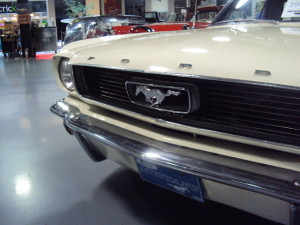My 37-point checklist has saved me from buying a “lemon” several times. Don’t buy a problem child when there are so many cars to choose from.
I have purchased a lot of used cars over the years. After buying a few duds, I figured out that I needed to stop buying cars that just looked cool. To help solve my problem – or addiction – I put together the following checklist to protect me when buying a used car.
37 Tips for Buying a Good Used Car
1. Walk around the car. If the car is dirty, have the owner wash and dry it so you can check the paint’s condition. That layer of dirt can hide a lot of damage.
2. Check out the alignment of all body panels. The seams and gaps between them should be uniform. This helps you determine whether the car has been in an accident.
3. Check to make sure each body panel is painted to match.
4. Open the doors, hood and trunk – you are looking for rough-textured paint in the jambs. This helps determine if there has been paint work done on the car. Also, it’s a good time to look at the rubber seals on the doors and trunk.
5. Look at the tread left on the tires.
6. Open the hood of the car and look for oil leaks. Also, pull the dip stick and look at the color of the oil. If it looks milky, that can indicate a serious engine problem. While you are at it, open up the radiator cap to see the coolant – if it looks brown, this can also indicate engine trouble. Do this before the car is started up so you don’t burn yourself.
7. Check the condition of the drive and fan belts – they shouldn’t be cracked.
8. Look at the battery. They are date-stamped so you can tell how old they are.
9. Look under the engine for oil leaks (bring a flashlight).
10. Have the owner start the car with you standing behind it. Watch for any blue smoke coming out of the tail pipe – this tells you if the engine is burning oil and is wearing out.
11. Stand in front of the car while the owner revs up the engine. Listen for any clicking, clattering or knocking sounds. These indicate serious engine trouble.
12. Get inside the car to check out the controls.
13. Check to see if the dash lights work. Also, check to make sure all of the gauges work.
14. Honk the horn and listen to the radio.
15. Try the wipers in all their settings. Also, spray the wiper fluid.
16. Turn on the heater and let it warm up.
17. Try all of the blower fan settings.
18. Turn on the air conditioner and see if it blows cold.
19. Try the accessory power plug – plug your cell phone charger in to make sure the socket works.
20. Make sure the glove compartment door opens and closes.
21. Check the dome light.
22. Try out the sunroof in all its positions.
23. Roll all the windows up and down – both from the driver’s master switches and each individual door switch.
24. Get out of the car to inspect all of the exterior lights.
25. Check the brake lights, headlights, high beams, fog lights, turn signals and emergency flashers.
26. Take a test drive.
27. For cars that are automatics, start the car and put it into each gear. Listen for any clunks or funny noises.
28. With the car at a stop, turn the steering wheel and listen for any squeaks or rumbling noises.
29. Take the car out on the street and drive it at different speeds to see if it moves smoothly.
30. Hit a bump or pothole to see how the shocks react.
31. Speed up briskly to test the acceleration.
32. While going at a good speed, apply the brakes firmly. Make sure there are no squealing noises and the car stops in a straight line. Just make sure there is no one driving right behind you. Be safe!
33. Take the car on the freeway and try out the cruise control.
34. On a manual shift car, test the clutch. While at a stop and pulled safely out of any roadway, put the car in its highest gear. Hold the brakes very hard and slowly let out the clutch. The car should die right away. This tells you if the clutch is in good shape.
35. Drive the car in each gear and listen for any strange noises or grinding.
36. Ask to see all of the car’s service records. Read through them to see if the car has had regular maintenance. A car without service records is one to be a little wary of.
37. If all of these things check out, determine if the car is the one you want – then have it inspected by a professional mechanic. I have seen these inspections cost around $150 or so. Make sure the car is a good candidate before you spend the money. Any seller that refuses to let you have the car inspected is one to run away from. And I mean run away fast!!
I have followed these steps for quite a while during the process of buying used cars. You need to know what works and what doesn’t. This can give you some good points for negotiating the asking price of the car. You can’t expect a used car to not have some issues. You just want to make sure that the problems are minor and can be fixed inexpensively.
Do some price research on the type of car you are looking at before you go see it. Also, ask to see the car’s title. Make sure it is not branded as a totaled or salvaged vehicle. A lot of sellers say, “You drive the car not the title.” Well, that’s just not the case. You will never get close to what you paid for this type of car when you finally go to sell it. Besides, you just don’t know how severely damaged the car was.
Carfax Vehicle History Reports for Used Cars
Another good thing to do is to have the seller purchase a CarFax vehicle history report on the vehicle. These reports list all of the car’s owners, what states the car has been registered in, and if it has ever been in a reported accident.
I know the the checklist above might seem long, but you need to have a good feeling for how every part of the car works. Once you combine this information with what your mechanic reports, you will know if you have found your next car.
Be thorough – don’t just take a seller at his word. You need to watch out for yourself. Follow these steps and you have an excellent chance of avoiding a lemon. Remember, if this car doesn’t check out, there are most likely dozens more that you can look at. Don’t be afraid to simply walk away. Buying a used car doesn’t have to be a guessing game.




0 comments on “My Checklist For Buying a Good Used Car”
1 Pings/Trackbacks for "My Checklist For Buying a Good Used Car"
[…] make these mistakes unless money is no object. And check out my 37-point checklist for buying used cars to make sure you get the car you really […]